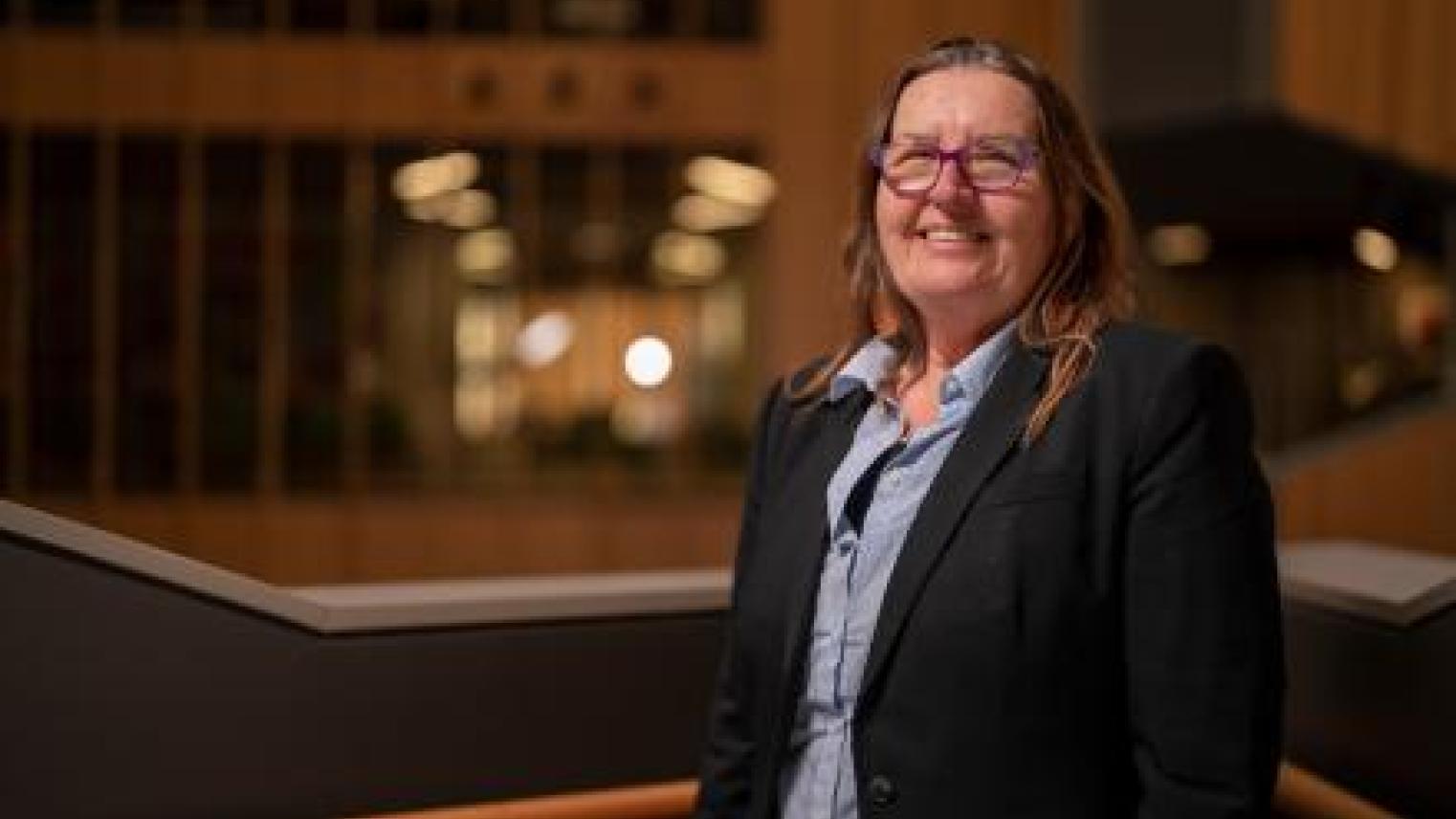Virginia Marshall to lead ARC project in Aboriginal Indigenous traditional medicines

RegNet’s Inaugural Indigenous Postdoctoral Fellow, Dr Virginia Marshall has been awarded the Australian Research Council’s Discovery Indigenous grant for her project, Barriers and pathways to development of Indigenous traditional medicines. We spoke with Virginia recently to congratulate her and learn more about the significance of the research and why it matters.
Congratulations on your achievement. How does it feel knowing that the ARC recognises the importance of the research?
It is an honour to receive an ARC Indigenous Discovery grant as they are highly competitive and quite prestigious. Securing the ARC grant gives recognition to the merit of this important Indigenous-led Aboriginal medicine research, and recognition to our outstanding research team and research framework with its strong focus on respectful engagement with Traditional Owners.
I am told that taking on a project with reach and magnitude as the lead chief investigator will be a life changing experience for me, but it is one that I relish. I look forward to recruiting and supervising a postdoctoral fellow to work with me on IP and Indigenous governance aspects relating to the commercial development of Traditional Knowledge (TK) in genetic resources. The Indigenous governance component of the research will be very significant in the context of Australia’s international obligations under UNDRIP and the Nagoya protocol.
Tell us more about the project and what it aims to achieve?
Recognising and upholding Indigenous economic sovereignty is key to addressing the persistent inequalities faced by Aboriginal and Torres Strait Islander Australians. Recognising Indigenous economic sovereignty empowers Aboriginal peoples to determine their own economic futures rather than relying on external (imposed) development agendas. An increasing number of Aboriginal groups have pursued the commercial potential of products and services that draw from their Traditional Knowledge including art, cultural tourism and environmental services, and more recently Indigenous foods. However, the commercial potential of traditional medicines is an area of enormous unrealised potential, despite the wide recognition of Indigenous medicines in international protocols and conventions such as UNDRIP and the Nagoya Protocol.
Since the 1980s Nyikina Mangala knowledge holders in the Kimberley and their supporters have sought to commercialise the natural pain-relieving medicinal plant mudjala but have been met with a number of barriers. These are barriers that other Indigenous groups are likely to face in the commercial development of any resources that have potential medicinal uses, and they are barriers that our research project aims to address.
Who are the other members of the project and what will they be working on?
I will be heading up an outstanding team of chief investigators and Indigenous research collaborators which brings together expertise in Indigenous knowledge, law and regulation, medical anthropology and pharmacological science to conduct world-leading research. It will be a great honour to work closely with one of Australia’s leading medical anthropologists, Professor Emma Kowal from Deakin University, and with internationally renowned leader in drug discovery, Professor Ron Quinn AM from Griffith University’s Institute for Drug Discovery. Professor Kowal will supervise the project’s other postdoctoral fellow and Professor Quinn will supervise the project’s PhD scholar who will be working on compound extractions and compositional analysis.
The project will also draw on the expertise of two consultants, Chris Oliver who has over 20 years industry experience as research director with nutraceutical company Blackmores and Dr Penny Johnson a medical anthropologist with extensive experience in ethnographic videography. Two Indigenous research collaborators, Mr John Watson and Ms Annie Milgin, both senior Aboriginal Elders will provide cultural guidance and facilitate engagement with Nyikina Mangala informants.
What are some of the expected outcomes of the grant?
The project will help develop the capacity of the Australian regulatory system to better understand Aboriginal culture and to better protect TK within the Intellectual Property system. In doing so it will facilitate and support Traditional Owners who wish to progress the development of their TK within the Australian IP and therapeutic goods regulatory systems. In this way the project will enhance the capacity of Indigenous knowledge holders and communities to ensure they obtain maximum benefit from any commercial development opportunities they develop or are presented with.
In broader terms, the research has significant potential to assist Aboriginal people increase local employment and training opportunities, generate new income streams, create and support Indigenous businesses, increase awareness and protection of cultural and environmental heritage, protect traditional knowledge from biopiracy and maintain and revitalise culture. More specifically, the outcomes from the project could provide a strong evidence base to support the development of improved commercial development pathways for Traditional Knowledge.
Anyone you would like to thank?
I’d certainly like to thank the College of Asia and the Pacific and the CAP Research Office, in particular Sean Downes and Dharani Sabba who worked with me on the project application and on the rejoinder to the assessor’s report. They are very talented people and exceedingly good at what they do. And I want to acknowledge Professors Emma Kowal and Ron Quinn, and the other team members, for their work on drafting the project proposal.
The support and endorsement of key project collaborators, the Kimberley Land Council and the Kimberley Aboriginal Law and Culture Centre has also been vital to securing this grant. We look forward to working with them and with the Nyikina Mangala native title representative body and Nyikina Mangala communities to achieve the outcomes of the project.